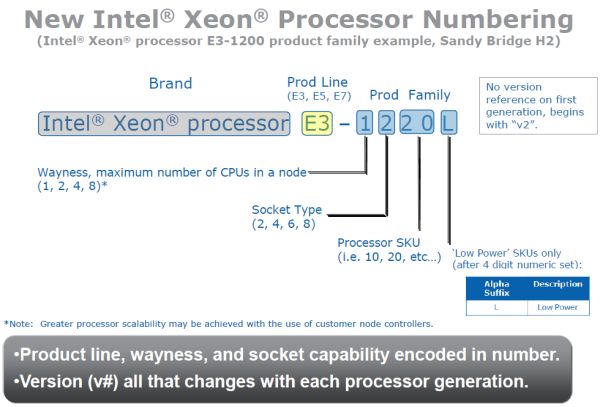Westmere-EX: Intel Improves their Xeon Flagship
by Johan De Gelas on April 6, 2011 2:39 PM EST- Posted in
- IT Computing
- Intel
- Nehalem EX
- Xeon
- Cloud Computing
- Westmere-EX
Comparing Westmere-EX and Nehalem-EX
Yesterday, Intel announced that their flagship server processor, the Xeon Nehalem-EX, is being succeeded by the Xeon Westmere-EX, a process-shrinking " tick" in Intel's terminology. By shrinking Intel's largest Xeon to 32nm, the best Westmere-EX Xeon is now clocked 6% higher (2.4GHz versus 2.26GHz), gets two extra cores (10 versus 8) and has a 30MB L3 (instead of 24MB).
As is typical for a tick, the core improvements are rather subtle. The only tangible improvement should be the improved memory controller that is capable of extracting up to 20% more bandwidth out of the same DIMMs. The Nehalem-EX was the first quad-socket Xeon that was not starved by memory bandwidth, and we expect that the Westmere-EX will perform very well in bandwidth limited HPC applications.
With the launch of Westmere-EX (and Sandy Bridge on the consumer side before it), it appears Intel is finally ready to admit that their BMW-inspired naming system doesn't make any sense at all. They've promised a new, "more logical" system that will be used for the coming years. The details of the new Xeon naming system are presented in the image below.
There is some BMW-ness left (e.g. the product line 3-5-7), but the numbers make more sense now. You can directly derive from the model number the maximum number of sockets, the type of the socket, and whether the CPU is low-end, midrange, or high-end. Intel also has the "L" suffix present for low power models.












32 Comments
View All Comments
Speed3mon - Friday, April 8, 2011 - link
Gay!agreenbhm - Wednesday, April 6, 2011 - link
That thing is weak!Ushio01 - Wednesday, April 6, 2011 - link
The E3 Sandy bridge xeons have hyper threading so should be 4/8 in the table.JarredWalton - Wednesday, April 6, 2011 - link
Apparently the PDF is incorrect... they only list 4 (or 2), but I'll update the table.(http://newsroom.intel.com/servlet/JiveServlet/down...
dcollins - Wednesday, April 6, 2011 - link
What is purpose of such high-end, high price CPUs? I am honestly curious, not being sarcastic.It seems to me that buying more cheaper servers would give better performance for the money. Anyone care to enlighten me?
Arnulf - Wednesday, April 6, 2011 - link
Lower combined power usage ?Lower heat output and fewer related heat management issues ?
Smaller volume ?
Easier management (only one system to maintain rather than a number of separate systems) ?
I'm sure one could think of more potential upsides, but there are also potential downsides (such as "single dead CPU = dead server").
cdillon - Wednesday, April 6, 2011 - link
There are still some applications that haven't been designed to scale to multiple servers, so one large monolithic server is required to scale that application performance up.When it comes to consolidation virtualization, which easily scales to multiple servers, I think multiple 2-socket servers hit the price/performance "sweet spot" and 4-socket servers are less cost-effective. 8+ socket consolidation virtualization hosts are an irresponsible waste of money and anybody using 8-socket servers in that particular situation are simply doing it to appear impressive and not considering price/performance, or have a simple-minded "bigger is better" mentality.
Concillian - Wednesday, April 6, 2011 - link
Sooo... like... all upper management then?
Iketh - Wednesday, April 6, 2011 - link
My friend works at a retro TV station here in the US. All they do is read shows from magnetic tapes and copies them bit-by-bit into huge multi-GB files on harddrives. They have dual quad-core systems running each instance. The cpus hover at 2-3% usage, with cooling fans in each system spinning at 20k rpms so that it sounds like a wind tunnel when you walk into the room. Absolutely sickens me. And the CEO is in the "hall-of-fame" at the college he graduated from...yuhong - Wednesday, April 6, 2011 - link
Not all virtualization software even support 8-socket servers anyway, for example Hyper-V is limited to 64 logical processors.